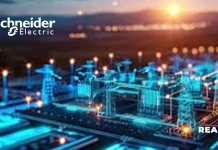Essential to understanding the evolution of the polymer 3D printing industry is exploring the change from low-cost printing technologies and materials to the slow growth and adoption of innovative polymer printing technologies and materials, from viscous thermosets to carbon fiber composites to foams.In doing this primary research, IDTechEx has identified many startups looking to improve every aspect of the polymer AM supply chain, from hardware to software to materials; some are even acting as vertical integrators to deliver parts made with innovative AM technologies straight to end users.
While several new technologies and materials have originated from legacy players like Stratasys and 3D Systems, many have been created by startups looking to push polymer AM’s boundaries in its capabilities and applications.
In IDTechEx’s market report on 3D printing, “Polymer Additive Manufacturing 2023-2033: Technology and Market Outlook”, the polymer AM industry is forecast to rise to over US$21 billion by 2033. This technical market report includes 85 forecast lines across polymer hardware and materials and over 50 company profiles from promising startups to market leaders, material players, and more. This was completed with an extensive number of primary interviews to bring the reader the latest and most accurate information.
Also Read: Fabric8Labs Closes $50M Series B Financing for Electrochemical Additive Manufacturing Technology
Many polymer 3D printer manufacturers have sought to address the throughput concerns inherent with additive manufacturing with varying degrees of success. One of the more unique approaches has been pioneered by Evolve Additive Solutions, who developed a technology called Selective Electrophotographic Thermoplastic Process (STEP) that combines elements of powder bed fusion, sheet lamination, and 2D laser printing.
With STEP, a layer is imaged onto a charged drum, where the imaged areas become discharged. The drum passes through a bed of charged thermoplastic particles, picking up a layer of particles onto the drum matching the image. This layer is passed onto a conveyor belt and taken to the build platform, where the layer is aligned with and fused to the part using heat and pressure.
SOURCE: PR Newswire




